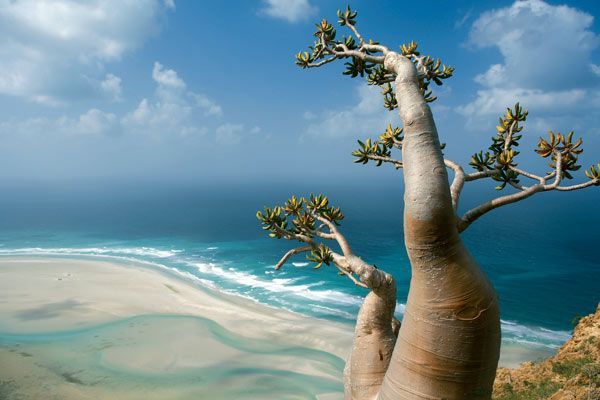Lifestyle
7.8.2022
Socotra: the fascinating island of Yemen

Off the coast of Yemen and Oman, the archipelago of Socotra reveals itself as a true paradise on earth. And this title is only due to the presence of the Socotra dragon tree. This unique tree, named after the island, plays an essential role in the protection and safeguarding of more than 800 endemic species.
The Socotra archipelago, spread over 250 km in the northwestern Indian Ocean, comprises four islands and two rocky islets that seem to extend the Horn of Africa. Considered as a dream land in the Indian Ocean, the site has been classified as a Unesco World Heritage Site since 2008 because of its landscapes and its unique biodiversity.
A unique ecosystem…
The archipelago is indeed home to an extraordinary nature reserve with a great diversity of plants and one of the highest rates of endemism in the world. 37% of the 825 species of plants present, 90% of the species of reptiles and 95% of the species of land snails are not found anywhere else in the world.
The site is also distinguished by the important migrations of bird populations, some of which are threatened with extinction. As for marine life, Socotra is home to more than 250 species of reef-building corals, 730 species of coastal fish and 300 species of crabs, lobsters and shrimps.

…but it is hanging by a thread (or a tree)
Socotra is home to a tree that also grows only on this island, an almost legendary tree: the dragon tree. The dragon tree of Socotra is dazzling in more than one aspect: by its parasol shape, its blood red sap, its use in traditional medicine and especially its role in maintaining the biodiversity of the island. As an example, we find a lizard living only in the bark of the tree. Moreover, it is the only tree on the island capable of producing shade and capturing horizontal rainfall to feed its foliage.
However, the dragon tree is threatened with extinction by drought and cyclones that are becoming more and more frequent. Indeed, the dragon tree is composed primarily of 80% of water collected during the monsoons, more rare in recent years. Moreover, the species has a very slow growth which makes it vulnerable to climatic conditions. The Socotra dragon tree does not display its spectacular crown until it reaches adulthood, not before 800 to 1000 years!
The island of Socotra must therefore preserve its magic tree to maintain the balance of its fauna and flora.
popular

